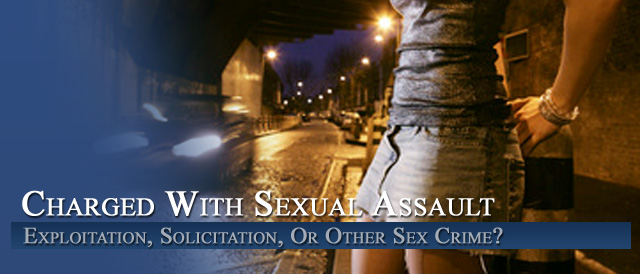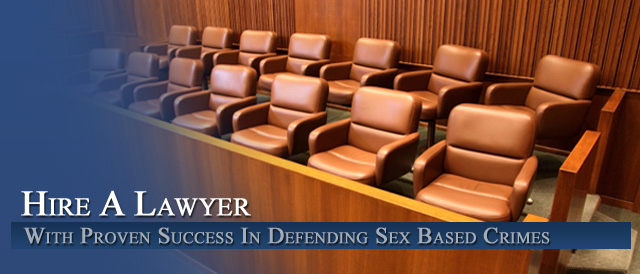




Colorado Criminal Sex Crimes Law: A 2011 Case Delves Into Defending Against Colorado Sexual Exploitation of Children Charges
By Colorado Criminal Sex Crimes Defense Lawyer for the Defense of Colorado Sexual Exploitation of Children Charges – H. Michael Steinberg
Introduction to Case Analysis
It has been my experience that one of the best ways for those charged with Colorado Crimes to understand their charges – and this particularly applies to Colorado Sex Crimes charges – is to analyze new cases handed down by the Colorado Courts of Appeal. These cases have gone to trial and they help the reader to understand what can happen during a trial – what defenses work – which defense do not.
In the following case – the charge was Sexual Exploitation of Children – the Court ruled against the defense in several respects – I analyze the ruling below at relevant points in the excerpted decision. – you will see my analysis at the lines beginning with HMS:
HMS: Here is a basic statement of the appeal:
FACTS: The Defendant, Douglas L. Brown, appealed his judgments of conviction entered on jury verdicts finding him guilty of three counts of sexual exploitation of a child.
After executing a search warrant for defendant’s home, the police seized numerous items including, as pertinent here, a laptop and an external hard drive for a computer. On the laptop and hard drive, the police found a photograph and two videos depicting child pornography.
HMS: Here are the issues – that is what happened at trial and what went wrong for the defendant.
At trial, the DA presented the testimony of:
• a computer forensics expert who stated that the laptop was registered to defendant and that he found the three images in the active, not deleted, files;
• a detective, qualified as an expert in the detection of child pornography, stated that the images did not appear to be faked and that the individuals depicted therein were “clearly under the age of eighteen”; and
• a doctor, qualified as an expert in the field of pediatrics and child development, testified that the individuals in the photo and in one of the videos were about ten to thirteen years old and that the persons in the other video were, at most, sixteen years old.
The Defendant denied knowing that the image and videos were on his computer or knowingly downloading child pornography. He testified that over thirty people had access to his computer and could have used his computer for whatever purpose they wanted. He also related that he was aware, beforehand, that the police were coming to his house to execute a search warrant.
Defendant argued that because he knew the police were coming and willingly left his home without attempting to delete the files, the jury should infer that he did not know about, much less was responsible for, the pornographic materials.
In addition, the Defendant argued that the police did not know if the images were tampered with or manipulated, who took them, when they were taken, or the age of the people in them, and thus, they only assumed that the photo and videos depicted real children. In this respect, he asserted that software is available to make “any photograph of anything you want.”
The jury found defendant guilty as charged.
Issue I. The Admission of Photograph and Videos
The Defendant contended on appeal that the trial court erroneously admitted the photo and videos that depicted child pornography over his foundation, authentication, and CRE 403 objections.
In the trial court, defendant argued that (1) the prosecutor had the burden to prove that the photo and videos depicted real children; (2) because the prosecutor could not establish that the images accurately represented what was depicted, the images could not be properly authenticated; and (3) displaying the images to the jury would be prejudicial to him because it would “think the worst of him.”
The trial court held that the prosecution was not required to prove that the materials depicted real children and that, because “this type of material is the crux of the three counts[,] . . . there’s really no way around” the prejudice to defendant. Accordingly, it overruled defendant’s objections and admitted the evidence.
On appeal, the defendant argued that:
• the court erroneously concluded that the prosecution did not have to prove that the images depicted real (as opposed to virtual) children;
• the photo and videos were not, in any event, properly authenticated because no witness could say when, where, how, or under what conditions, they were created; and
• he suffered extreme prejudice from the jury’s viewing of the images.
A person commits the crime of sexual exploitation of a child if, for any purpose, he or she knowingly possesses or controls any sexually exploitative material. § 18-6-403(3)(b.5), C.R.S. 2010.1
“Sexually exploitative material” is a depiction of “a child engaged in, participating in, observing, or being used for explicit sexual conduct.”
Section 18-6-403 prohibits only the use of real children in sexually exploitative material.
Accordingly, to convict a defendant of sexual exploitation of a child under section 18-6-403, the prosecution must prove beyond a reasonable doubt that the image(s) depict real children,
In Colorado, the government must prove that the images are of actual children, it is not required to present evidence of a child’s identification or expert testimony establishing that the image depicts a real child.
There is ….no requirement that the government present expert testimony or additional evidence to establish that the image depicts a real child;
….the government is not required to produce a technology expert to prove that an image contains real children
the prosecution is not required to produce expert testimony to establish that the depicted child is real)
Here, the Colorado Court of Appeals held – there was sufficient evidence presented in this case upon which the jury could have found that the children depicted in the images were real.
That evidence consisted of:
• the images themselves, which, in our view, a reasonable jury could perceive to depict real children. .. juries are permitted to distinguish between real and virtual images- as a trier of fact, the jury is capable of determining whether real children were used in pornographic images simply by viewing the images themselves
and, (in this case..the court held:)
• the supporting testimony from a detective, who opined that the images did not appear faked, and from a doctor, who focused on the physical characteristics of sexual development, the body and hand structure, and the facial features (including lack of facial hair) of the persons depicted in the images.
In light of the foregoing, the images were not inadmissible on the ground that they were not proved to depict real children.
Authentication
“The requirement of authentication or identification as a condition precedent to admissibility is satisfied by evidence sufficient to support a finding that the matter in question is what its proponent claims.” CRE 901(a);
At the trial in this case, the computer forensics expert testified that, after receiving the seized computer equipment from the police, he gave each piece of evidence an individualized bar code for identification purposes and made a copy of each hard drive. He then examined the copied hard drives for evidence that would be relevant to defendant’s case and compiled that evidence on a “finding CD” for the police.
He identified the CD admitted into evidence as having contained the photo and videos that he had found on defendant’s computer and hard drive; and
• three other exhibits — a copy of the photo and two CD’s containing the videos — as “in the same condition as they were when [he] found them off of the hard drive and [laptop]
The expert’s testimony was sufficient to show that the images were involved in (indeed, were the critical evidence of) the crimes for which defendant was charged and were substantially unchanged at the time of trial. Therefore, they were admissible as properly authenticated real evidence. See Salcido, 506 F.3d at 732 (government properly authenticated videos and still images found on the defendant’s hard drives and CD-ROM by presenting evidence as to the chain of custody, specifically, how the images were retrieved from the defendant’s computers.
Here, the images were direct proof of an essential element of the charged crimes, and the fact that the nature of the charges may be prejudicial to defendant does not justify exclusion of such relevant evidence
Sufficiency of the Evidence
“We have examined the images, and they appear to depict real persons, who a doctor opined, based on certain physical characteristics, were children. Further, a detective opined that the images did not appear fake, and there was no evidence that the images were fake or of virtual children.
Under these circumstances, we conclude that the evidence was sufficient to permit the jury, as the finder of fact, to determine that the prosecution had met its burden of proving that the individuals depicted were real children.
…. the jury had the images as well as the testimony of a medical expert, which, among other things, focused on facial features, physical characteristics of sexual development, and anatomy and musculature of those depicted;
… and the only evidence from defendant was the doctor’s statement that she had no experience with computer photo imagery).
Thus, defendant is not entitled to have his convictions vacated on insufficiency of evidence grounds.
Expert Witness Testimony
We also reject defendant’s contention that the trial court’s admission of a detective’s expert testimony warrants reversal.
Over defendant’s objection, the trial court qualified the detective as an expert in detecting child pornography based on the following evidence:
• the detective had been in law enforcement for approximately nine years and had been a detective for almost four years;
• he was a detective in the child abuse unit for over two years, during which time he took a one-week class about “sexual abuse investigations and physical abuse investigations with children”;
• about half the classes he took during that one-week session were devoted to investigating sexual exploitation of children cases;
• while in the child abuse unit, he handled a “dozen or so” child pornography investigations; and
• from his classes and his experience with child pornography classes, he learned that “in order to definitively say that a child is under 18, [he] look[s] for puberty, [that is,] has the child hit that pubescent range yet,” and that to determine whether a person is prepubescent, he looks to “the physical characteristics of the . . . person [including] facial hair, pubic hair, Adam’s apple, [and] defined muscle tone” because “[t]hose kind of things will tell you . . . [that] this person has hit puberty or this person has not.”
The detective was permitted to testify that, in his opinion, the persons in the two videos appeared to be “way under the age of 18” and the individual in the photo was “clearly under the age of 18.” On appeal, defendant argues that (1) the prosecutor violated Crim. P. 16 by not endorsing the detective as an expert witness prior to trial; and (2) the detective was not qualified to offer specialized knowledge in detecting child pornography. Both of these contentions were preserved by defendant’s objections in the trial court.
Detective’s Qualifications
“If scientific, technical, or other specialized knowledge will assist the trier of fact to understand the evidence or to determine a fact in issue, a witness qualified as an expert by knowledge, skill, experience, training, or education, may testify thereto in the form of an opinion or otherwise.” CRE 702.
A qualified expert need not “hold a specific degree, training certificate, accreditation, or membership in a professional organization.” He or she can be qualified by any one of the five factors listed in CRE 702: knowledge, skill, experience, training, or education.
Trial courts possess broad discretion to admit expert testimony in criminal cases. To establish that a court has abused its discretion in admitting expert evidence, the court’s decision must be shown to be manifestly arbitrary, unreasonable, or unfair
Here, we cannot say that the court’s qualification of the detective as an expert was manifestly unreasonable, arbitrary, or unfair, in light of the detective’s (1) two years with the child abuse unit; (2) classes on investigating sexual exploitation of children cases; and (3) previous handling of approximately a dozen child pornography investigations.
Moreover, any error in qualifying the detective as an expert was rendered harmless when the doctor testified in detail as to her opinion that the individuals in the images were under the age of eighteen.
Other Articles of Interest:
- In 2011 – The Federal Prosecution of Child Pornography Cases
- Colorado Criminal Sex Crimes Law – Understanding How a Charge of Sexual Exploitation Can Turn Into A Life Sentence – The Sexually Violent Predator
- 18-3-405.4 C.R.S. Internet Sexual Exploitation of a Child
- Information On Colorado Prosecution Trends In Sexual Exploitation Of Children Cases – 18-3-405.4 – 18-6-403 – Child Pornography Cases
- Q and A on the Colorado Internet Sex Crimes of Sexting, Internet Luring, and Sexual Exploitation of a Child












